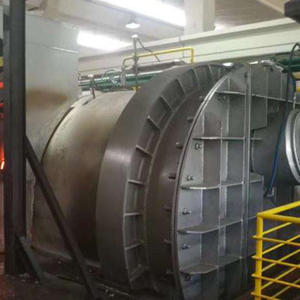Ingot cast is a casting method used to create metal ingots or ingots. The method involves pouring molten metal into a pre-prepared casting form, allowing the metal to cool and solidify to form a solid cast block, known as an ingot or ingot. This casting method is commonly used in the metalworking and metallurgical industries to produce standardized metal blanks for subsequent processing and manufacturing. So, How do you make an ingot cast?

To make an ingot cast, you can follow the steps outlined below:
1. Equipment and Safety Precautions:
1). Gather the necessary equipment, including a crucible, tongs, protective gear (gloves, goggles, and heat-resistant clothing), and a mold suitable for ingot casting.
2). Ensure you have a well-ventilated and heat-resistant workspace.
2. Metal Selection:
1). Choose the type of metal you want to cast into an ingot. Common metals for ingot casting include aluminum, copper, brass, bronze, and various alloys.
2). Obtain the metal in the form of scrap, ingots, or pellets.
3. Crucible Preparation:
1). Select a crucible made of a suitable material that can withstand the high temperatures of molten metal, such as graphite or ceramic.
2). Prepare the crucible by cleaning it thoroughly to remove any contaminants or residue from previous use.
4. Melting the Metal:
1). Place the metal pieces or pellets into the crucible.
2). Heat the crucible in a furnace or using a suitable heat source, such as a propane torch or induction heater, until the metal reaches its melting point.
3). Stir the molten metal gently with a metal rod to ensure uniform temperature and composition.
5. Mold Preparation:
1). Select a mold appropriate for ingot casting. It should be made of a heat-resistant material, such as cast iron or steel, and have the desired shape and size for the ingot.
2). Preheat the mold to prevent rapid cooling and thermal shock.
6. Pouring the Metal:
1). Using heat-resistant tongs or a pouring ladle, carefully transfer the molten metal from the crucible to the prepared mold.
2). Avoid splashing or turbulence during the pouring process to prevent defects in the ingot.
7. Solidification:
1). Allow the molten metal to cool and solidify inside the mold. The cooling rate will depend on the metal and mold material.
2). Ensure proper ventilation during the cooling process to dissipate any fumes or gases released.
8. Demolding and Finishing:
1). Once the metal has solidified and cooled sufficiently, open the mold and carefully remove the ingot.
2). Inspect the ingot for any surface defects or irregularities.
3). If desired, use appropriate tools, such as a saw or grinder, to trim excess material or smooth rough edges.
It's important to note that the specific details and techniques may vary depending on the type of metal, equipment availability, and safety considerations. It's advisable to consult relevant resources, follow proper safety protocols, and seek guidance from experienced individuals when performing ingot casting.
 English
English  Español
Español  Português
Português  русский
русский  français
français  日本語
日本語  Deutsch
Deutsch  Tiếng Việt
Tiếng Việt  Italiano
Italiano  Nederlands
Nederlands  ไทย
ไทย  Polski
Polski  한국어
한국어  Svenska
Svenska  Malay
Malay  বাংলা
বাংলা  हिन्दी
हिन्दी  Pilipino
Pilipino  Türk
Türk  عربى
عربى  Indonesia
Indonesia  norsk
norsk  čeština
čeština  Українська
Українська  Javanese
Javanese  فارسی
فارسی  తెలుగు
తెలుగు  Burmese
Burmese  български
български  Latine
Latine  Azərbaycan
Azərbaycan  Српски
Српски  Esperanto
Esperanto  Afrikaans
Afrikaans  Català
Català  Cymraeg
Cymraeg  Беларус
Беларус  Hrvatski
Hrvatski  Kreyòl ayisyen
Kreyòl ayisyen  Shqiptar
Shqiptar  Bosanski
Bosanski  Кыргыз тили
Кыргыз тили  ಕನ್ನಡ
ಕನ್ನಡ  IsiXhosa
IsiXhosa  Chichewa
Chichewa  Somali
Somali  O'zbek
O'zbek  հայերեն
հայերեն  Sundanese
Sundanese  Malagasy
Malagasy 






